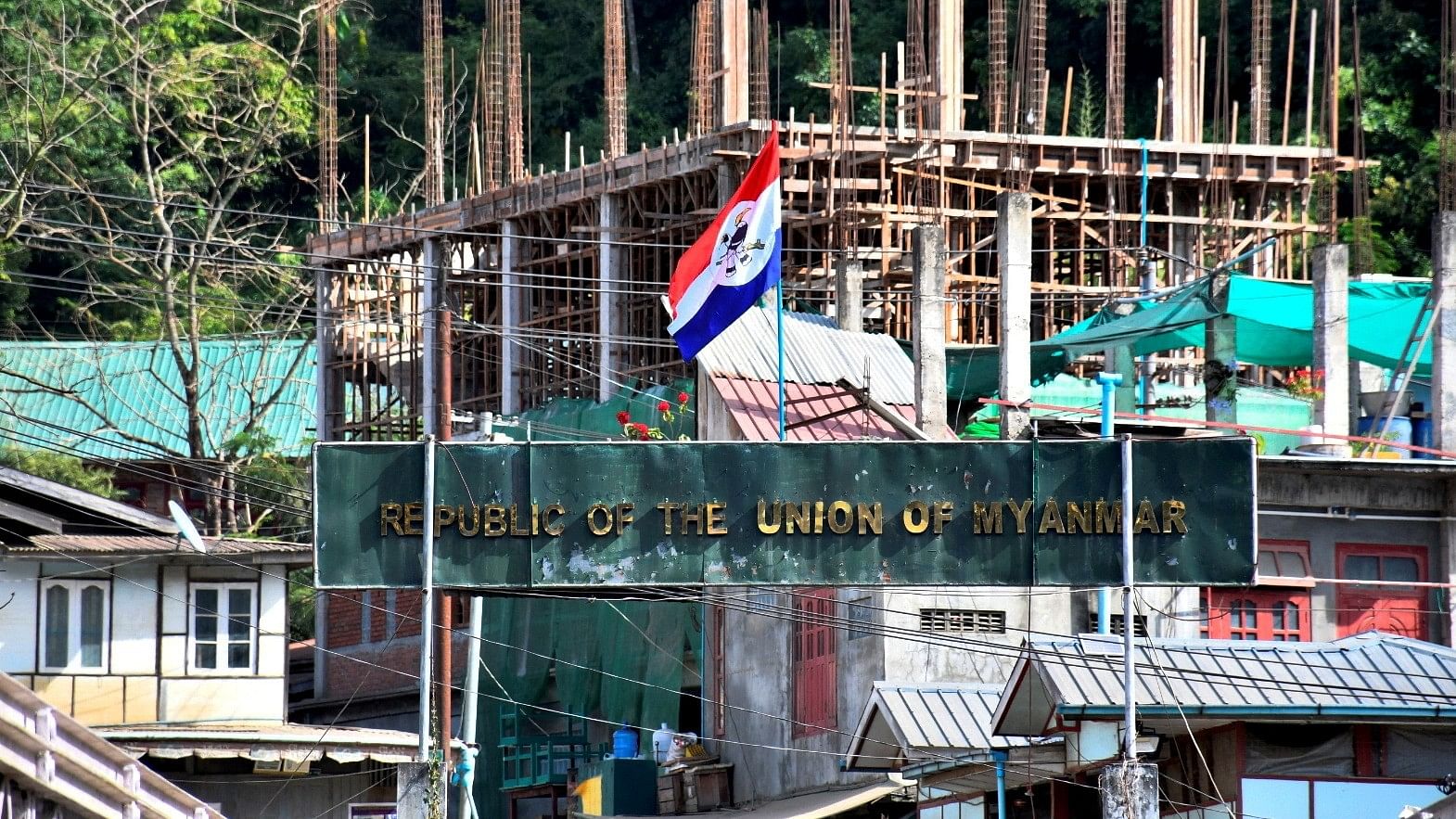
A flag of one of the Myanmar rebel forces is installed next to an under-construction structure in Myanmar's Khawmawi village on the India-Myanmar border.
Credit: Reuters File Photo
Myanmar's ruling military is facing attacks on multiple fronts in its borderlands as an alliance of ethnic minority insurgent groups combines with pro-democracy fighters to try to capture territory and challenge the junta's rule.
Why has fighting erupted?
On Oct. 27, an alliance of ethnic minority groups launched coordinated attacks on military posts in northern Shan State bordering China and took several towns, in an operation they called 1027, referring to the date the assault began.
The "Three Brotherhood Alliance", as the group is known, said its objective was "to safeguard the lives of civilians, assert our right to self defence, maintain control over our territory and respond resolutely to ongoing artillery attacks and airstrikes" by the junta.
It was also "dedicated to eradicating the oppressive military dictatorship", it said, and committed to combating online gambling scam centres on the Myanmar-China border, which involve thousands of foreign workers, many against their will.
China, which has significant influence in the area, has urged an end to the fighting and had been pressing the junta to break up illicit businesses that have made many Chinese victims of scams, some even slavery. Some analysts and diplomats say it is unlikely the 1027 offensive could have been carried out without China's blessing.
Why Was Operation 1027 significant?
Though fighting has raged in multiple regions of Myanmar since the generals seized power in a 2021 coup, the scale of the new offensive represents the biggest military challenge to the junta's rule, stretching its forces on several fronts.
The alliance comprises three groups with extensive fighting experience - the Myanmar National Democratic Alliance Army (MNDAA) the Ta'ang National Liberation Army (TNLA) and the Arakan Army (AA).
Importantly, they were joined also by members of so-called people's defence forces, a loosely organised movement backed by Myanmar's parallel, National Unity Government (NUG). This indicates a level of planning and coordination not seen since the coup, with militias also assisting by thwarting the military's resupply efforts.
The attacks in Shan State were followed by the AA opening a front against the military in its base of Rakhine State, despite a ceasefire agreed a year ago, with attacks by insurgents in Kayah state bordering Thailand, and the Sagaing region and Chin State, bordering India.
How serious a threat is the Junta facing?
It is too soon to predict the extent to which the military's rule in the rest of the country could be under threat, analysts say.
Generals have run Myanmar for five of the past six decades and have a track record of combining battlefield might with divide-and-rule strategies to control from the centre and keep in check formidable borderland rebellions.
But the 1027 offensive has given a black eye to a well-equipped military with decades of experience fighting insurgencies.
There are signs it is emboldening the armed opposition, with rebels testing security forces for vulnerabilities in several regions, exploiting the junta's slow response and the ease with which its troops ceded dozens of posts and allowed small arms, ammunition, machine guns and even armoured vehicles to be seized.
The operation has been cheered around Myanmar and closely watched on social media, challenging military narratives of its invincibility. The reclusive junta has had no choice but to concede it is being tested, with an admission by its appointed president that the country was at risk of breaking apart.
What is likely to happen?
With its reputation at stake, the junta is unlikely to concede easily and risk a domino effect of challenges to its authority in more regions of a country where its rule is deeply unpopular.
The military has superior firepower and resources, including air assets and artillery, and may try to mount a decisive response to crush the rebellion.
A big decision for the military will be where it deploys its assets and carries out air strikes. Security forces are already stretched by the extensive armed opposition and a strong response on one front could expose the military elsewhere.
Prolonged fighting will test the staying power and arsenals of both sides. A likely scenario would be the junta losing control of some border regions, though remaining in power centrally, an outcome that would be favourable to neighbours India, Thailand and China, which are concerned about instability and the prospect of a refugee crisis.